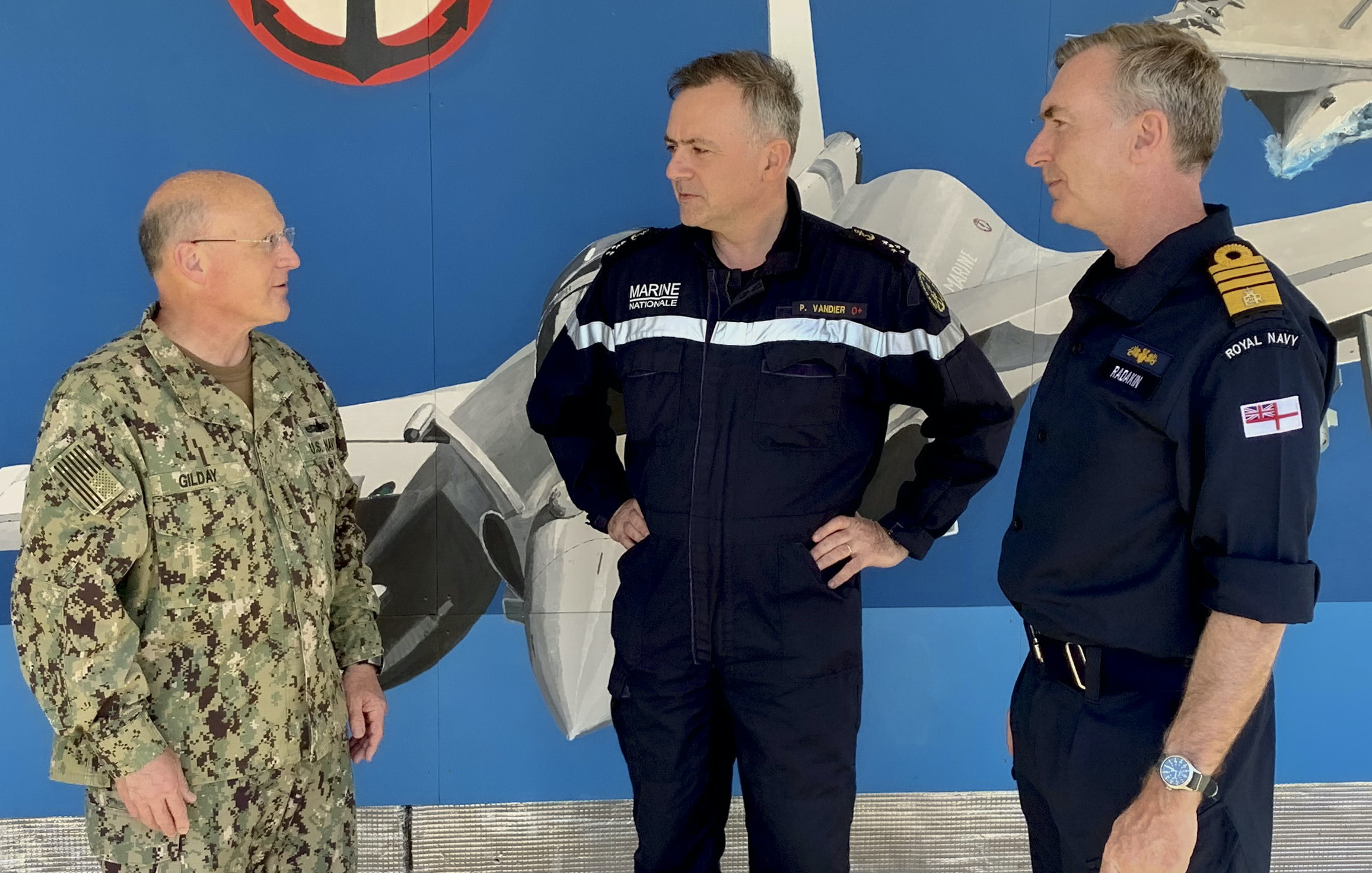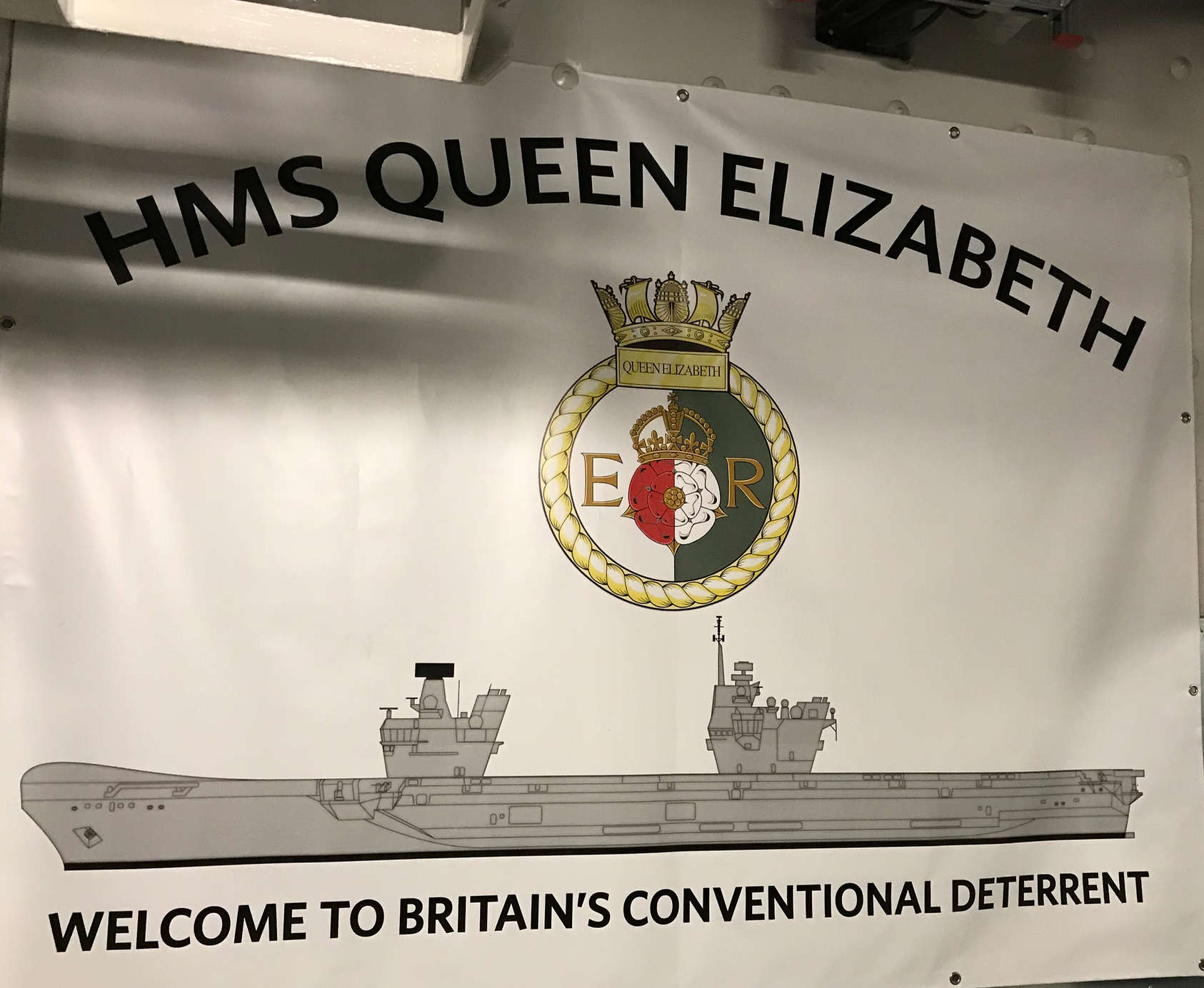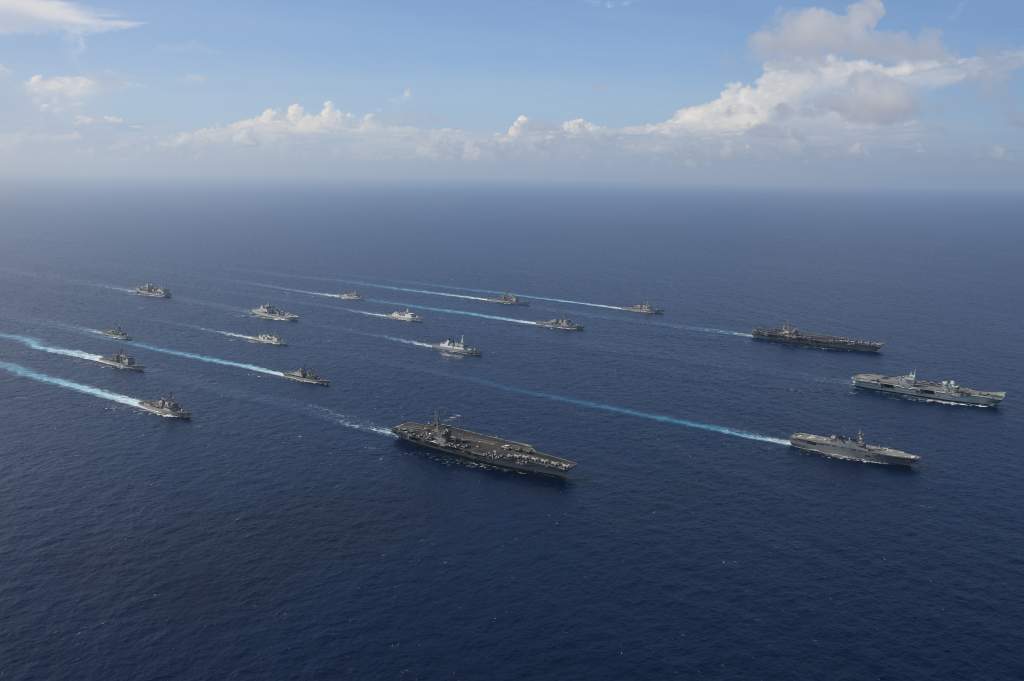
The U.K. Royal Navy has been at the forefront of London’s push to the Pacific and a key component of a growing network of navies operating together in Asia. First Sea Lord and Chief of the Naval Staff Adm. Tony Radakin took charge of the RN in 2019 as the service was at the early stages of preparing for its carrier deployment as the U.K. moved out on its intentions to be more active on the seas and around the world.
On Thursday, the Ministry of Defence announced that Radakin will take charge of the Chief of the Defence Staff in the U.K. He will take over the post from British Army Gen. Sir Nicholas Carter.
In a statement, U.K. Minister of Defence Ben Wallace called Radakin “an outstanding First Sea Lord and Chief of Naval Staff overseeing a period of transformation in the Royal Navy that has seen more ships deployed, for longer, all over the world. That includes the inaugural voyage of HMS Queen Elizabeth (R08) at the head of our new Carrier Strike Group which set sail in May.”
Last week, USNI News spoke with Radakin about the ongoing deployment of Queen Elizabeth, the AUKUS deal in which the U.K. and U.S. will work with Australia to build a new class of nuclear-powered submarines, and less restrictive“come as you are” naval operations could be the future of maritime alliances.
In September, the surprise agreement between London, Canberra and Washington to embark on a decades-long nuclear submarine development program served to pull the Royal Navy closer to Australia and U.S. operations in the Pacific.
After canceling the deal to buy the Attack-class submarine from the French Navy, the Australians entered into an agreement that will start with an 18-month planning period to bring the RN, Royal Australian Navy and the U.S. Navy together to determine the basic outlines for a nuclear submarine program in Adelaide in south Australia.
The agreement, “at its heart is exciting because it is big and geostrategic. And it’s much, much bigger than the Royal Navy,” Radakin told USNI News.

“Being three like-minded nations gives you an agility and a nimbleness to come together quite quickly and to plan to potentially do quite big things. Because you’re less constrained with having to bring a whole host of other nations along with you and long deliberations and so on that inevitably go with the more complex it gets.”
In particular, the addition of a RAN nuclear submarine developed in conjunction with the U.S. and the U.K., as well as Australia’s $24 billion purchase of nine Hunter-class frigates based on the British-designed BAE Type-26 Global Combat Ships, will bring a new degree of interoperability between the three navies, he said.
“All through my career, we’ve talked about interoperability, can you turn up? Can you understand each other? Can you get on the right circuit? Do you understand your tactics? Can you work together? and so on… That allows a big arc, where you can be super interoperable,” he said.
Radakin said the expansion of the British presence around the world gives more opportunities to operate with allies — like including the U.S. destroyer USS The Sullivans (DDG-68); and Dutch frigate HNLMS Evertsen (F805) with the Queen Elizabeth strike group.

“What we’ve been debating is interchangeability. So, when we’re looking at maintaining our freedom of maneuver in the North Atlantic. Does it really matter whether it’s a U.S submarine or a U.K. submarine?” he said.
“When I look at the deck of Queen Elizabeth, does it matter whether it’s the U.S. Marine Corps jet, or a Royal Navy jet or Royal Air Force jets? And actually, when you put the fact that you’ve got two different nations operating off one nation’s carrier, it magnifies the importance because of the amazing investments that it takes in a sort of nationhood to trust each other to that extent.”
When Radakin took charge of the RN in 2019, Queen Elizabeth was completing its first round of testing with F-35B Lighting II Joint Strike Fighters. Built from the keel up to support the short-take-off, vertical landing (STOVL) F-35B, Queen Elizabeth deployed in May with a squadron of Marine F-35Bs aboard to supplement a Royal Air Force F-35B squadron.
The deployment of the largest ship in the history of the Royal Navy is part of a larger push from London to assert its global role.

When USNI News visited the carrier in 2018, visitors were greeted with a banner that read, “HMS Queen Elizabeth: Welcome to Britain’s Conventional Deterrent.”
While the core ships in the strike group are Royal Navy, the construct is designed for other nations to ease in and out of the strike group during its time at sea.
“There might be periods where another nation is part of your core Carrier Strike Group. But for a particular mission sets or tactical mission that’s going on… country ‘X’ says, ‘actually, my policy and my approach, there may be slightly different,’ or ‘I actually want to use that time to go into the country ‘Y’ because I want to reach out to country ‘Y’,” he said.
“And if you can create that construct, it makes it much easier for nations to come together because they know they’re not now in these straitjackets. They’re not having to use their national red card all the time to say, ‘I’m now not up for this.’ So you’ve actually got a frame that allows these conversations, and they’re very, very comfortable conversations. They’re not loaded conversations. They’re not like, ‘if you’re not coming with me for this, and then you’re not you’re not part of the show.’”
The future of the U.K. Royal Navy in the Pacific will be rooted in informal alliances and ships operating without the restrictions of more formalized treaty organizations like NATO, he said. Hey gave AUKUS and the informal U.S., Japan, India and Australia structure known as “the Quad” as examples.
“Like-minded nations, or these maritime democracies, or these nations with shared values, and interests, whichever, whichever bucket you put them into, and it could be. It could be AUKUS, it could be Quad, it could be Quad plus,” he said.
Days after USNI News spoke with Radakin, Queen Elizabeth drilled with U.S. carriers USS Carl Vinson (CVN-70) and USS Ronald Reagan (CVN-76) and the Japanese big deck warship JS Ise (DDH-182) just to the east of the Philippine Sea for two days of exercises outside of the structure of a formalized multilateral treaty agreement.

“The exercise involved six different navies – the U.S Navy, the U.K. Royal Navy, the Japan Maritime Self-Defense Force, the Royal Netherlands Navy, the Royal Canadian Navy and the Royal New Zealand Navy – making up a total of 17 surface ships, which included four aircraft carriers,” USNI News reported earlier this week.
As the U.K. expands its presence in the Pacific, it will refine how it will balance a steady naval presence with operational unpredictability.
“At one level this has been almost the most scripted ever carrier deployments [but it’s had] real value at the strategic and operational level and proved that capability. But I think some of our U.S. colleagues would question the predictability of that,” he said.
“And I think we’ve got to have a big conversation about the year. I think this is where, again, the partnership with the U.S. Navy is really helpful about dynamic employment, and about unpredictable unpredictability.”





